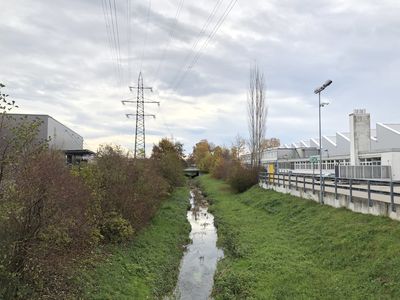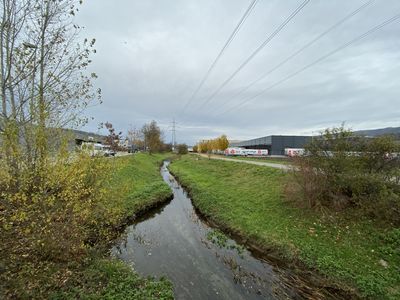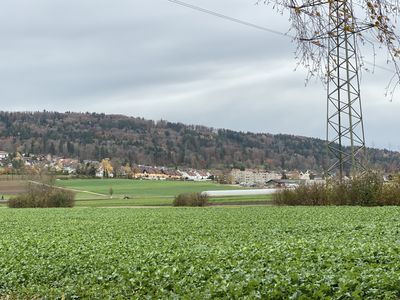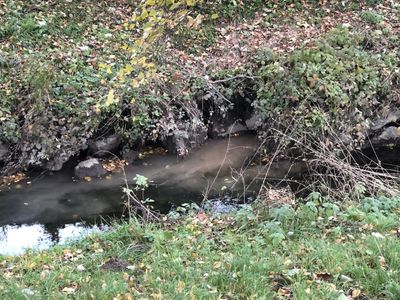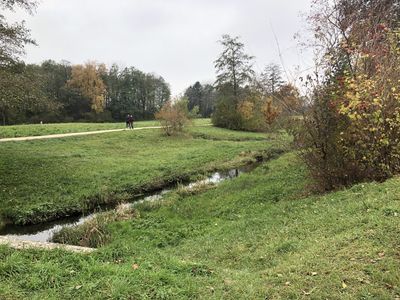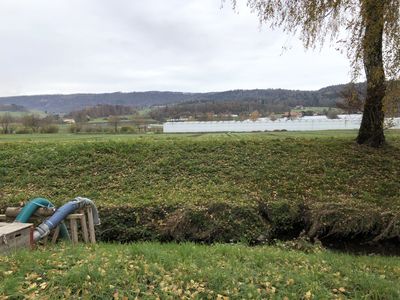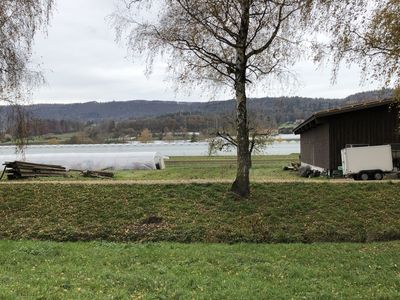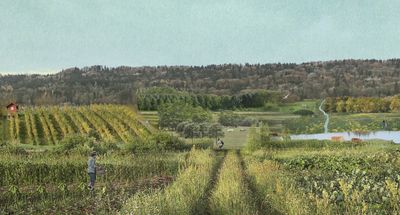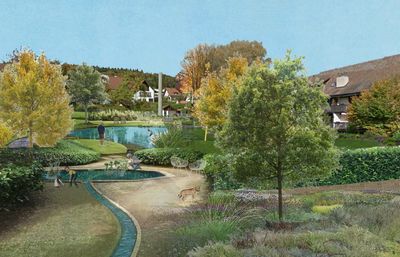Hydroscopic EcologyAn Approach to Metropolitan WaterAndroniki Prokopidou
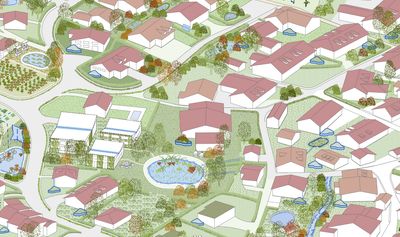
On the Swiss Plateau, there are many examples of smaller regions such as the Furt Valley, which are faced with water shortages due to the combined effects of water pollution and climate change: our current extensive agricultural and industrial land use practices that are amplified by the extreme weather events of the changing climate. Hydroscopic ecology as an approach to design resilient territories implies the reform of land use practices in order to protect and regenerate local water resources and restore local ecosystems. At the heart of this approach lies the retention and local infiltration of (rain) water and the shift to less polluting strategies of cultivation and urbanisation. Hydroscopic ecology advances the topography, the soil and water conditions as equal design agents alongside the built environment. One of the basic strategies followed is decentralised and holistic natural water management through a cyclical understanding of the water resource: no rain and waste water should be discharged from the area. Rather it will be collected, cleaned and stored in local aquifers where it can be distributed again according to the seasonal needs, all the while retaining enough water for potential extreme weather events.
Hydroscopic ecology proposes the rethinking of the concept of the Wassergenossenschaft—historical water supply structure of Switzerland and promotes the sustainable use of local water resources by completing the hydrological cycle and ensuring the water supply of current and future demands of peripheral urban areas, taking into account their significance for food production as well as their potential for population growth.
The hydroscopic approach in the Furt Valley aims at cleaning and recharging the currently heavily polluted upper aquifer by changing the land use practices and establishing a new stewardship towards local water resources. During this process—which could last up to five to ten years—a series of secondary closed-loop water cycles will increase the self-sufficiency of the Furt Valley in terms of its water supply.
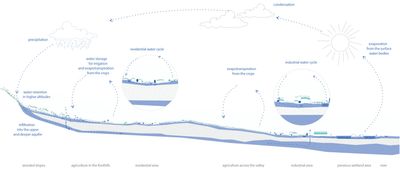
Wassergenossenschaften: New Scales of Territorial Water Management
A successful water supply depends not only on the availability of water sources, but also on their proper organisation and distribution. In Switzerland, the sovereignty over the use of water sources lies at the cantonal level, but responsible for the water supply are the respective municipalities, whose water supply structures have emerged historically. Until the mid-19th century, the citizens had to transport the water themselves, through the means of tubs and buckets, which they filled in the public fountains. However, if this public supply would not suffice, some communities took action and organised themselves in Wassergenossenschaften, with the aim to provide water for themselves. They were small groups of about 8 to 10 citizens, who searched for water sources, built reservoirs and capture wells and supplied their fellow citizens with water. As they were self-organised, they had to finance the necessary infrastructure out of their own pocket or with the help of loans. Even if they were becoming a popular model of private organisation, the Wassergenossenschaften could not sustain their power, neither in light of the rapid increase of population (especially in the 1970s) nor when faced with the increasing sovereignty of the municipalities over the water infrastructure. As a result, many of them had to dissolve by the end of the century.
The continuously increasing population and correlative water demand, stimulated the collaboration of neighbouring municipalities for the purpose of a more secure water supply. In the Canton of Zurich, these so-called Gruppenwasserversorgungen (group water supplies) consist of several neighbouring municipalities that exchange water with other adjacent groups of water supply networks and have over time become bigger collaborating entities. These organise the exchange with the main regional water supplier of Zurich and are responsible for the transport of water from the city to the affiliated communes. The quantity and price of this water in this trade, the so called option, is regulated in corresponding contracts which are renegotiated in a five-year cycle. Zurich supplies with water another 67 municipalities outside of the borders of the city, from which 12 are located even outside of the cantonal borders. This general tendency towards the concentration of large water resources is followed by infrastructural and administrative efforts to create a large scale networks, which are regulated by market rules, resulting in a few large municipalities monopolising the supply and exhausting their resources. Coupled with more unstable resource availability, there is a higher risk of system failure. In order to avoid this risk concentration, caused by the current great dependency on Zurich lake water, the Canton of Zurich has decided to secure the future water supply by extracting groundwater from the Rhine current until 2050, expanding the supply network over more than 200 km and across national borders. The question remains if this new scale of water security is the only answer, or if a more resilient strategy can be found in the neglected smaller scales of cooperation.
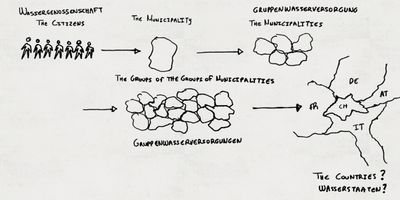
Hydroscopic Furttal
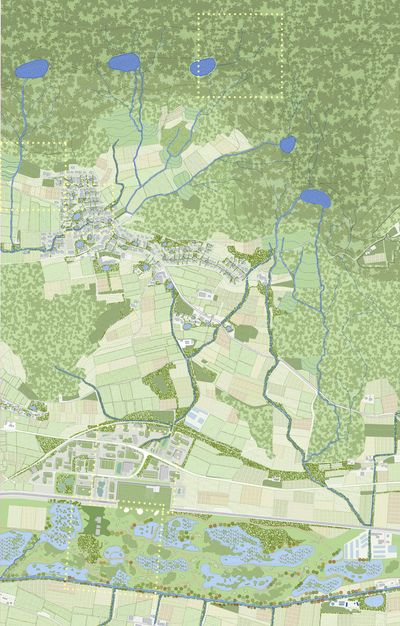
HYDROSCOPIC ECOLOGY IN THE FURT VALLEY
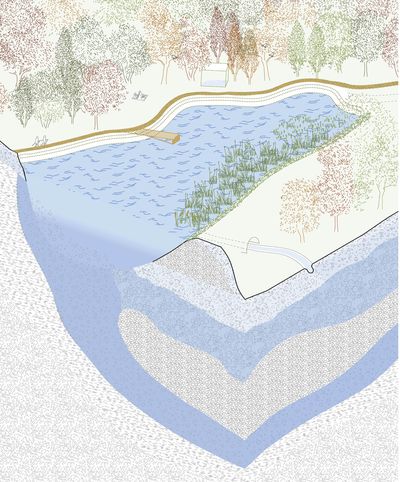
Water retention landscapes at higher altitudes
By storing excess water in the hydrostewards—water retention lakes on the higher altitudes, in deep percolation areas, this means in areas where the water slowly infiltrates in the soil and naturally recharges the aquifer. In the hydrostewards the stored water recharges both aquifers (the upper and the deeper). The level of water is controlled by small dams built with the excavated natural material.
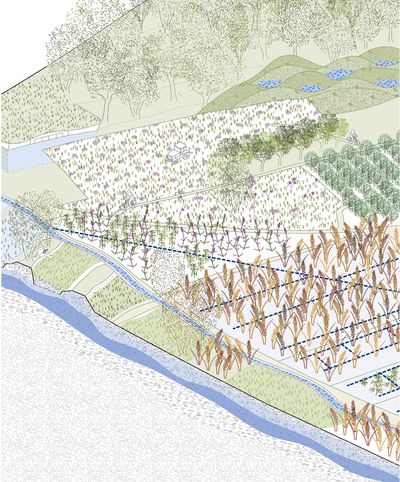
Climate resilient and water preserving cultivation
By preserving water in the hydrocultures across the valley. The water stored in the hydrostewards flows in water courses towards the valley through the cultivated fields. The water flow is slowed down in terraces in the valley fringes, from where it can be used used directly for the irrigation of the crops or stored temporarily. At this point, the water flowing from the higher altitudes could also be used for the production of hydropower. In order to clean the upper aquifer over the following years, conservation agriculture practices are proposed at first in the deep percolation fields—fields where the water penetrates into the aquifer. Permaculture principles enhance the water infiltration in these fields and at the same time reduce evapotranspiration from the crops.
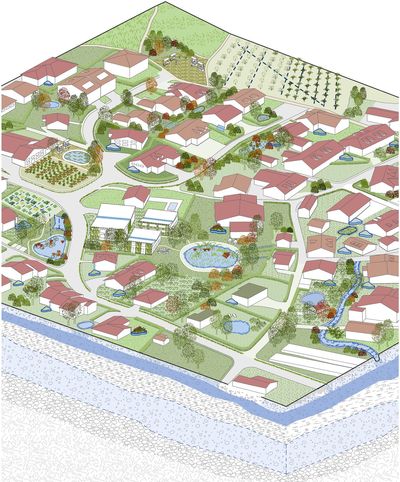
Rainwater cycles in residential areas
By harvesting and reusing rainwater in the hydrohabitats. With public and more private rain gardens, with private water reservoirs and with bio retention swales parallel to the main streets of the communities, rainwater is collected and surface runoff from the sealed surfaces is minimised. The collected rainwater can be used by the hydrohabitats for the irrigation of the gardens or other activities, such as car washing or infiltrates into the upper aquifer - already filtered by the appropriate vegetation in the rain gardens and swales.
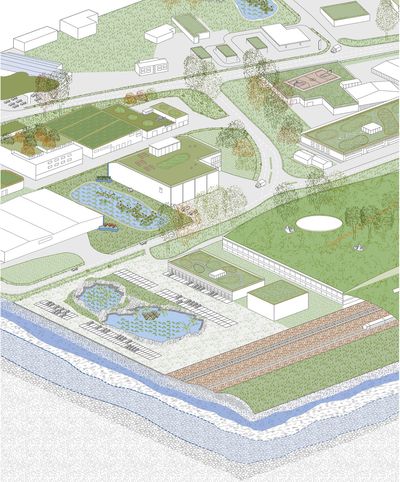
Cooler, more permeable industrial landscapes
By reducing the water runoff from the sealed surfaces and creating more permeable industrial landscapes in the hydrologistics. Evapotranspiration from the green roofs cools down the buildings and creates a more pleasant working atmosphere. All the while, constructed wetlands filter out the pollutants and let water infiltrate into the upper aquifer.
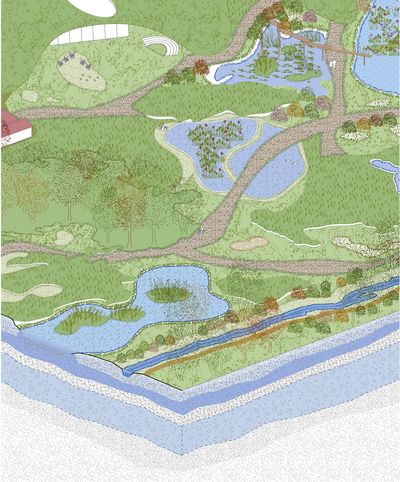
Wetland restoration as leisure landscapes
By restoring parts of the previous wetland in the hydrocommons. Water is kept into the valley and is allowed to flood according to the different seasons and levels of water parts of the new recreational water landscape. Among its recreational value, the collected water naturally recharges the upper aquifer. All the while, it can be used by the farmers for the irrigation of their crops. By implementing water fuel cells, the accumulated water could also be used for renewable energy production.
